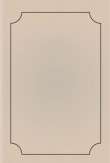قراءة كتاب Travels in Arabia
تنويه: تعرض هنا نبذة من اول ١٠ صفحات فقط من الكتاب الالكتروني، لقراءة الكتاب كاملا اضغط على الزر “اشتر الآن"
href="@public@vhost@g@gutenberg@html@files@41960@[email protected]#page201" class="pginternal" tag="{http://www.w3.org/1999/xhtml}a">201
CHAPTER XIV.
Palgrave’s Travels—Adventures in Ri’ad
CHAPTER XV.
Palgrave’s Travels—His Escape to the Eastern Coast
CHAPTER XVI.
Palgrave’s Travels—Eastern Arabia
CHAPTER XVII.
Lady Blunt’s pilgrimage to Nejd
LIST OF ILLUSTRATIONS.
|
Night March In The Desert |
Frontispiece |
|
|
FACING PAGE |
|
The Coffee Hills of Yemen |
|
|
View of El-Medina |
|
|
A valley in Oman |
|
|
The ruins of Nakab El-Hadjar, in Hadramaut |
|
|
View of Medina from the West |
|
|
Camp at Mount Arafat |
|
|
Costume of Pilgrims to Mecca |
|
|
William Gifford Palgrave |
|
|
An Arab Chief |
|
|
Captain Burton as a Pilgrim |
|
|
The village of El-Suwayrkiyah |
|
|
An arab encampment |
|
|
Death on the desert |
CHAPTER I.
Sketch of Arabia: Its Geographical Position, and Ancient History.
The Peninsula of Arabia, forming the extreme southwestern corner of Asia, is partly detached, both in a geographical and historical sense, from the remainder of the continent. Although parts of it are mentioned in the oldest historical records, and its shores were probably familiar to the earliest navigators, the greater portion of its territory has always remained almost inaccessible and unknown.
The desert, lying between Syria and the Euphrates is sometimes included by geographers as belonging to Arabia, but a line drawn from the Dead Sea to the mouth of the Euphrates (almost coinciding with the parallel of 30° N.) would more nearly represent the northern boundary of the peninsula. As the most southern point of the Arabian coast reaches the latitude of 12° 40′, the greater part of the entire territory, of more than one million square miles, lies within the tropics. In shape it is an irregular rhomboid, the longest diameter, from Suez to the Cape El-Had, in Oman, being 1,660, and from the Euphrates to the Straits of Bab-el-Mandeb, 1,400 miles.
The entire coast region of Arabia, on the Red Sea, the Indian Ocean, and the Gulfs of Oman and Persia, is, for the most part, a belt of fertile country, inhabited by a settled, semi-civilized population. Back of this belt, which varies in width from a few miles to upwards of a hundred, commences a desert table-land, occasionally intersected by mountain chains, and containing, in the interior, many fertile valleys of considerable extent, which are inhabited. Very little has been



